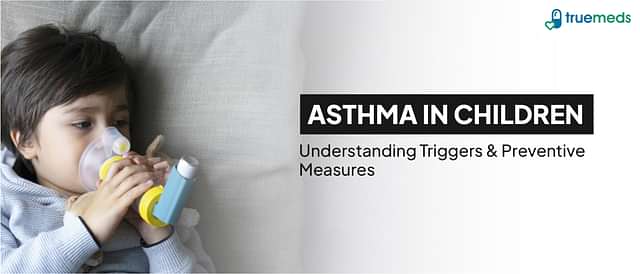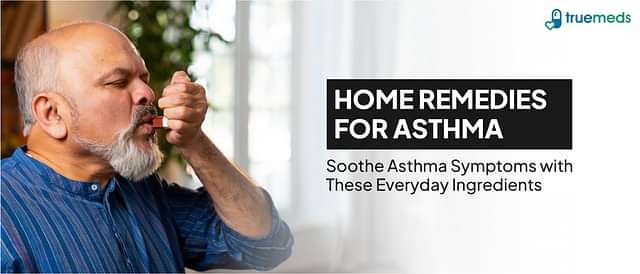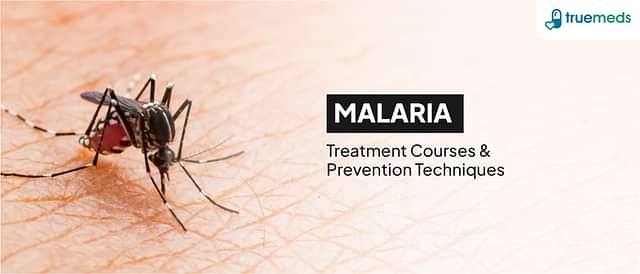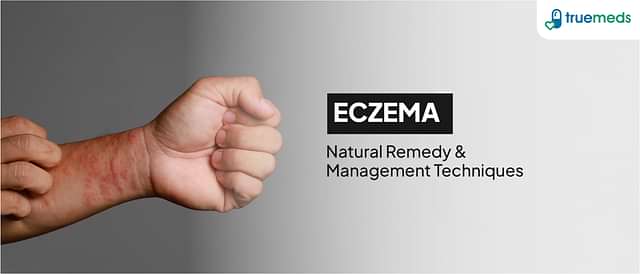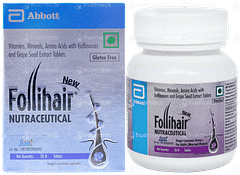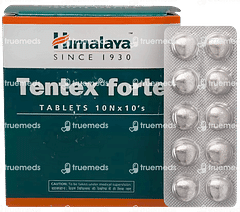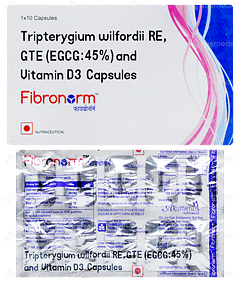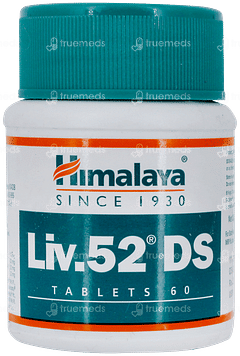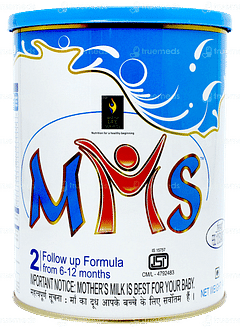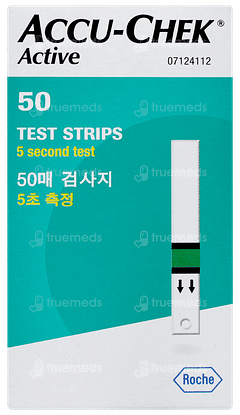Substance use disorder
Substance use disorder is a complex mental disorder that affects millions worldwide, characterised by the uncontrolled use of substances despite harmful consequences. It can lead to addiction, health problems, and social issues and is often linked to mental health disorders. Substance use disorder is treatable, and understanding its causes, symptoms, and treatment options is crucial for effective management.
Last updated on : 13 Dec, 2024
Read time : 16 mins
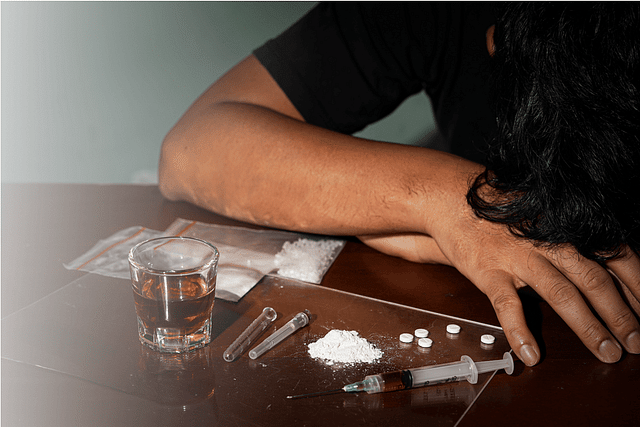
Overview of Disease
Substance use disorder is a pervasive issue that affects individuals from all walks of life. Substance use disorder is a treatable mental disorder that alters a person's brain functioning and behaviour, resulting in an inability to control the use of various substances, including legal or illegal drugs, alcohol, or medications. The National Institute of Mental Health (NIMH) emphasises the severe consequences of substance use disorder, such as addiction, health problems, and social difficulties. This article aims to provide a comprehensive understanding of substance use disorder by exploring its causes, symptoms, and management options.
What is Substance Use Disorder?
Substance use disorder is a chronic condition defined by the uncontrolled use of a substance despite its detrimental effects on an individual's life. It arises when a person's consumption of alcohol or another substance (prescribed medicine or illegal drug) results in health issues or impairs their ability to function at work, school, or home. Substance use disorder can impact individuals of any age, gender, or socioeconomic background and is frequently associated with mental health disorders like anxiety, depression, and attention-deficit hyperactivity disorder (ADHD). The development of substance use disorder is influenced by a combination of factors, including genetic predisposition, environmental stressors, and peer pressure. Repeated substance use can alter brain function, leading to tolerance, withdrawal symptoms, and intense cravings.
Key Factors about Substance use disorder
| Category | Details |
| Also Referred as |
|
| Commonly Occurs In |
|
| Affected Organ |
|
| Type |
|
| Common Signs |
|
| Consulting Specialist |
|
| Treatement Procedures |
|
| Managed By |
|
Types of Substance use disorder
Substance use disorder encompasses various types, each associated with specific substances:
Opioid use disorder: Addiction to opioid painkillers, heroin, or other opioids.
Alcohol use disorder: Addiction to alcohol.
Stimulant use disorder: Addiction to stimulants such as cocaine, amphetamines, or ADHD medications.
Depressant use disorder: Addiction to depressants such as benzodiazepines or barbiturates.
Caffeine use disorder: Problematic caffeine consumption that leads to significant distress or impairment in daily functioning.
Cannabis use disorder: Compulsive use of cannabis despite experiencing significant negative consequences.
Hallucinogen-related disorders: Addiction to hallucinogens.
Inhalant use disorder: Intentional inhalation of vapours from commercial products or specific chemical agents to achieve intoxication.
Tobacco use disorder: Problematic pattern of tobacco use leading to clinically significant impairment.
Understanding the different types of substance use disorder is essential for tailoring treatment approaches to the specific needs of individuals struggling with addiction.
Early Signs of Substance use disorder
The early signs of substance use disorder can be subtle, but recognising them is crucial for timely intervention and support. Some common early indicators include:
Behavioural changes:
Loss of interest in previously enjoyed hobbies or activities
Neglecting relationships or reacting negatively to loved ones
Frequently missing work, school, or other important obligations
Engaging in risky behaviours, especially to obtain or use substances
Physical signs:
Unexplained weight fluctuations (loss or gain)
Bloodshot or glazed eyes
Altered appetite and sleep patterns
Slurred speech or impaired coordination
Psychological indicators:
Sudden, unexplained personality or mood changes
Irrational paranoia, anxiety, or fear
Decreased motivation or excessive fatigue
Increased agitation or anger
Noticing a combination of these early warning signs may indicate the development of a substance use disorder. Addressing these concerns promptly can facilitate early intervention and improve treatment outcomes.
Symptoms of Substance use disorder
As substance use disorder progresses, individuals may exhibit a range of physical, psychological, and behavioural symptoms that impact their health, relationships, and overall well-being. Some key symptoms include:
Physical symptoms:
Increased tolerance or need for higher doses to achieve desired effects
Withdrawal symptoms when attempting to reduce or stop substance use
Deterioration of physical appearance or hygiene
Unusual odours on breath, body, or clothing
Psychological symptoms:
Intense cravings or urges to use the substance
Using substances in unsafe conditions or situations
Sudden, unexplained financial difficulties
Frequent attempts to avoid or alleviate withdrawal symptoms
Behavioural symptoms:
Spending significant time obtaining, using, or recovering from substance use
Continuing use despite physical or psychological problems caused or worsened by the substance
Reducing or abandoning important social, occupational, or recreational activities due to substance use
Recognising these symptoms is essential for diagnosing substance use disorder and developing an appropriate treatment plan. Early intervention can prevent the progression of the disorder and its associated complications.
Stages of Substance use disorder
The progression of substance use disorder can vary depending on the individual and the substance used. However, there are common stages that many people experience:
Experimental use: The initial use of a substance, often in social settings, to experience pleasure or relaxation.
Regular use: Increased frequency of substance use, leading to neglect of responsibilities and relationships.
Problem or risky use: Substance use causes significant problems, such as health issues, financial troubles, or legal problems.
Addiction: Loss of control over substance use despite being aware of the harm it causes.
Withdrawal: Experience of withdrawal symptoms when attempting to stop using the substance.
Recognising these stages can help identify the severity of substance use disorder and guide appropriate interventions.
Causes of Substance use disorder
The development of substance use disorder is a complex interplay of multiple factors, including genetic predisposition, environmental influences, and psychological elements. Some key contributors include:
Genetic vulnerability:
Hereditary factors can increase an individual's susceptibility to developing substance use disorder
Family history of substance abuse may elevate risk
Environmental stressors:
Chronic stress, trauma, or adverse life experiences
Peer pressure or social norms that encourage substance use
Easy access to addictive substances
Mental health disorders:
Pre-existing conditions like depression, anxiety, or PTSD
Substance use as a coping mechanism for untreated mental health issues
Early exposure:
Substance use during adolescence or young adulthood
Disruption of brain development and increased risk of addiction
Understanding the multifaceted nature of substance use disorder causes is crucial for developing targeted prevention strategies and personalised treatment approaches.
Risk Factors
While anyone can develop substance use disorder, certain factors can increase an individual's vulnerability. Some notable risk factors include:
Family history:
Genetic predisposition to addiction
Exposure to substance abuse within the family
Mental health disorders:
Untreated or poorly managed mental health conditions
Using substances to self-medicate symptoms
Trauma or adverse experiences:
Childhood abuse, neglect, or household dysfunction
Witnessing violence or experiencing significant loss
Social influences:
Peer pressure to use substances
Lack of social support or connection
Substance-using social circles
Early substance use:
Experimentation or regular use during adolescence or young adulthood
Disruption of brain development and increased addiction risk
Identifying and addressing these risk factors can help prevent the onset of substance use disorder and guide targeted interventions for high-risk individuals.
Complications
Substance use disorder can lead to a wide range of short- and long-term complications that affect physical health, mental well-being, and social functioning. Some potential complications include:
Physical health problems:
Organ damage (e.g., liver, heart, lungs)
Increased risk of infectious diseases (e.g., HIV, hepatitis)
Malnutrition and gastrointestinal issues
Cognitive impairments and memory problems
Mental health issues:
Worsening of pre-existing mental health disorders
Development of new mental health conditions (e.g., depression, anxiety)
Increased risk of suicide or self-harm
Social and occupational consequences:
Strained relationships with family and friends
Job loss or decreased work performance
Financial difficulties or legal problems
Social isolation and stigma
Overdose and death:
Accidental overdose due to tolerance or contaminated substances
Increased risk of injury or death from substance-related accidents
Addressing substance use disorder early and comprehensively can help mitigate these complications and improve long-term outcomes for affected individuals and their loved ones.
Prevention of Substance use disorder
Preventing substance use disorder involves a multidimensional strategy that focuses on reducing the risk factors and enhancing the protective factors associated with drug misuse and addiction. Some key aspects of prevention include:
Understanding Risk and Protective Factors
Individual factors such as aggressive behaviour in childhood, lack of social attachment, and a history of trauma can increase the risk of developing substance use disorder.
Genetic factors, including a family history of substance use disorder, can account for about half of a person's likelihood of developing an addiction.
Community and environmental strategies
Collaborations between schools, nonprofit organisations, and community-based groups are essential for implementing effective prevention measures.
These strategies encompass information dissemination, education, providing alternatives to drug use, environmental changes, community-based processes, and problem identification and referral.
Focusing on youth and adolescents
Adolescence is a critical period due to increased risk factors such as transitions, stressors, and brain development.
School-based prevention programmes aim to enhance protective factors like skills development, socio-emotional wellness, and fostering connections with others.
Avoiding scare tactics
Research has shown that scare tactics are ineffective in preventing substance misuse.
Instead, preventive efforts should prioritise education, building positive relationships, and providing community support.
Diagnosis & Tests
Diagnosing substance use disorder involves a comprehensive evaluation of an individual's substance use patterns and their impact on various aspects of life. The diagnostic process includes:
Clinical evaluation
A thorough clinical assessment comprises a detailed history of substance use, medical history, and a mental health evaluation to determine the severity of the disorder.
Diagnostic criteria
The diagnosis is based on the criteria outlined in the Diagnostic and Statistical Manual of Mental Disorders, Fifth Edition (DSM-5).
These criteria include signs such as continued use despite harm, unsuccessful attempts to control use, and significant time spent in activities related to obtaining, using, or recovering from the substance.
Screening tools
Healthcare providers employ screening tools like the CAGE questionnaire (Cutting down, Annoyance by criticism, Guilty feelings, and Eye-openers) or the Substance Abuse and Mental Health Services Administration (SAMHSA) screening tools to identify potential substance use disorder.
Treatment & Management
Treating substance use disorder requires a holistic approach that encompasses medical, psychological, and social interventions. The key components of treatment include:
Medications
Pharmacotherapy can help manage withdrawal symptoms, reduce cravings, and prevent relapse.
Medications such as buprenorphine, methadone, and naltrexone are used to treat opioid use disorder, while acamprosate, disulfiram, and naltrexone are used for alcohol use disorder.
Behavioural therapies
Cognitive-behavioural therapy (CBT) helps individuals identify and change negative thought patterns and behaviours related to substance use.
Motivational interviewing aims to increase motivation for change and enhance engagement in treatment.
Contingency management uses rewards to reinforce positive behaviours and abstinence from substance use.
Rehabilitation programmes
Inpatient or residential programmes provide a structured environment away from triggers and offer intensive support and therapy.
Outpatient programmes allow individuals to continue living at home while attending regular treatment sessions.
Aftercare and support
Ongoing support through support groups, 12-step programmes, and sober living environments can help maintain long-term recovery.
Addressing co-occurring mental health disorders and providing vocational and educational support are crucial for successful reintegration into society.
Emergency Treatment
In cases of severe intoxication or overdose, emergency treatment may be necessary to stabilise the individual and prevent life-threatening complications. The key aspects of emergency treatment include:
Stabilisation and assessment
Ensuring the person's airway, breathing, and circulation are stable is the first priority.
A rapid assessment of vital signs, level of consciousness, and potential complications is performed.
Detoxification
Medically supervised detoxification may be required to manage withdrawal symptoms safely.
Medications like benzodiazepines can be used to manage alcohol withdrawal, while buprenorphine or methadone can be used for opioid withdrawal.
Overdose management
In cases of opioid overdose, naloxone, an opioid antagonist, can be administered to reverse the effects and restore breathing.
Supportive care, including oxygen therapy and monitoring of vital signs, is provided until the individual is stable.
Referral to Further Treatment
After stabilisation, the individual is referred to appropriate treatment programmes for long-term management of their Substance Use Disorder.
This may include inpatient rehabilitation, outpatient therapy, or a combination of both, depending on the severity of the disorder and the individual's specific needs.
Living with Disease
Living with substance use disorder can be challenging, but with the right support and treatment, recovery is possible. Here are some important points to keep in mind:
Substance use disorder is a complex condition that requires a comprehensive, bio-psycho-social approach to treatment, addressing the biological, psychological, and social aspects of the disorder.
Co-occurring mental health issues, such as depression, anxiety, post-traumatic stress disorder, and sleep disorders, are common in individuals with substance use disorders and require specialised care.
Long-term health management is crucial for patients with substance use disorder, as they often have higher rates of chronic diseases like heart disease, diabetes, and hepatitis C.
Behavioral therapies, including individual and group therapy, CBT, and alternative treatments like mindfulness and yoga, are essential components of substance use disorder treatment, helping to address the underlying causes of addiction and support long-term sobriety.
When to See a Doctor?
Seeking medical help is crucial at various stages of dealing with substance use disorder. If you or a loved one are struggling with substance use, it is essential to consult a doctor early on. Primary care physicians can screen for substance use issues, initiate conversations about treatment, and refer patients to specialised care if needed.
If you notice signs of addiction, such as increased tolerance to substances, withdrawal symptoms, or significant changes in behavior, it is time to consult a doctor. Addiction psychiatrists and addiction medicine physicians specialise in diagnosing and treating substance use disorders and related mental health disorders. They can provide comprehensive diagnostic assessments, develop treatment plans, prescribe medications, and offer psychotherapy.
Consulting an addiction specialist is highly beneficial, especially if there are co-occurring mental health issues. With the right support and treatment, individuals with substance use disorder can work towards recovery and lead fulfilling lives.
Key Takeaways
Substance use disorder is a chronic mental disorder characterised by an inability to control the use of substances despite negative consequences, affecting individuals of all backgrounds.
Substance use disorder progresses through stages, from experimental use to addiction and withdrawal, and understanding these stages helps identify the severity of the condition.
There are different types of substance use disorders, including opioid, alcohol, stimulant, and depressant use disorders, each requiring tailored treatment approaches.
Substance use disorder is influenced by multiple factors, including genetics, environmental stressors, mental health conditions, and early exposure to substances.
Early intervention and comprehensive treatment involving medications, behavioural therapies, and ongoing support are crucial for managing substance use disorder and improving outcomes.
FAQs
What is substance use disorder, and how does it affect individuals?
Substance use disorder is a medical condition involving uncontrolled substance use despite harmful consequences, affecting health, well-being, and quality of life.
What are the typical indicators that someone may have a substance use disorder?
Common signs of substance use disorder include cravings, tolerance, withdrawal, social problems, dangerous use, and continued use despite negative consequences.
How do healthcare professionals diagnose substance use disorder in patients?
Diagnosing substance use disorder involves a thorough evaluation of medical history, drug tests, prescription monitoring, mental health assessment, and using DSM-5 criteria.
Which treatment options are available for individuals struggling with substance use disorder?
Treatment for substance use disorder typically includes detoxification, behavioural therapy, medication, support groups, and long-term follow-up to prevent relapse and promote recovery.
Are there ways to prevent the development of substance use disorders?
Substance use disorder prevention strategies include education, early intervention, strengthening family ties, addressing mental health issues, and promoting healthy coping mechanisms.
What impact can substance use disorder have on an individual's overall health and well-being?
Substance use disorder can lead to various physical health problems, mental health issues, social difficulties, financial strain, and a decreased quality of life.
Where can families of individuals with substance use disorder find support and resources?
Families can find support through counselling, family therapy, support groups like Al-Anon or Nar-Anon, and educational resources from doctors and community organisations.
References
American Psychiatric Association. (2013). Diagnostic and statistical manual of mental disorders (5th ed.). https://doi.org/10.1176/appi.books.9780890425596
McLellan, A. T. (2017). Substance misuse and substance use disorders: Why do they matter in healthcare? Transactions of the American Clinical and Climatological Association, 128, 112-130. https://www.ncbi.nlm.nih.gov/pmc/articles/PMC5525418/
National Institute on Drug Abuse. (2020, June). The science of drug use and addiction: The basics. https://www.drugabuse.gov/publications/media-guide/science-drug-use-addiction-basics
Substance Abuse and Mental Health Services Administration. (2020). Key substance use and mental health indicators in the United States: Results from the 2019 National Survey on Drug Use and Health (HHS Publication No. PEP20-07-01-001, NSDUH Series H-55). Rockville, MD: Center for Behavioral Health Statistics and Quality, Substance Abuse and Mental Health Services Administration. Retrieved from https://www.samhsa.gov/data/
Volkow, N. D., & Blanco, C. (2023). Substance use disorders: A comprehensive update of classification, epidemiology, neurobiology, clinical aspects, treatment and prevention. World Psychiatry, 22(2), 203–229. https://doi.org/10.1002/wps.21073
Check Related Salts
Browse Other Conditions
Latest health articles
Top Health Essentials
Disclaimer
Top-Selling Medicines:
...View more
Top-OTC medicines:
...View more
Subscribe
Registered Office Address
Grievance Officer
Download Truemeds

Contact Us
Our customer representative team is available 7 days a week from 9 am - 9 pm.
v3.7.5
Our Payment Partners















